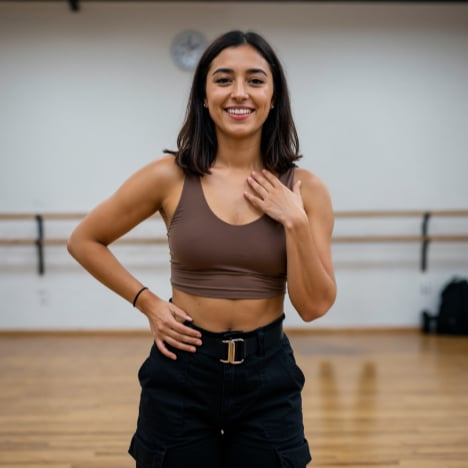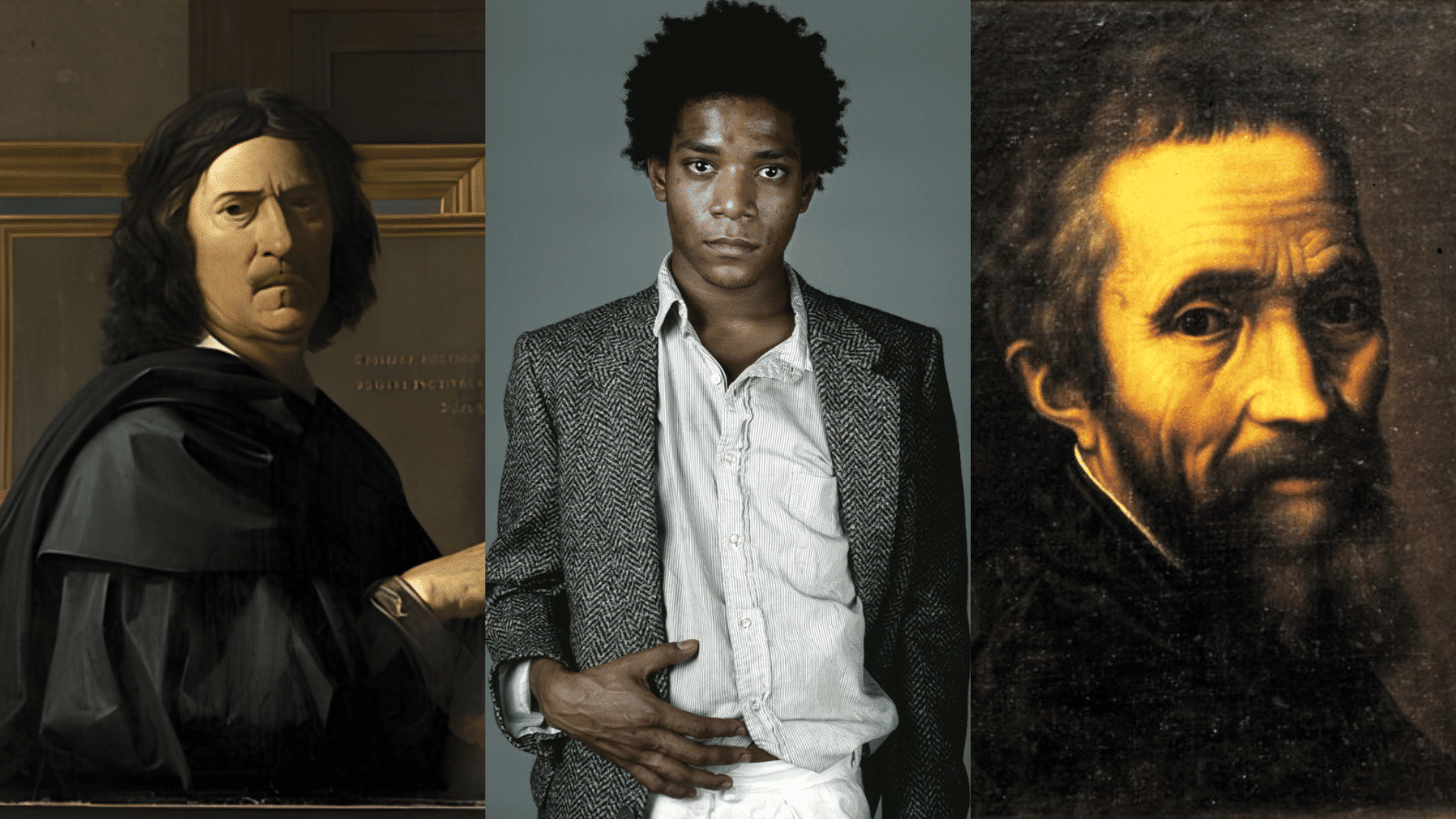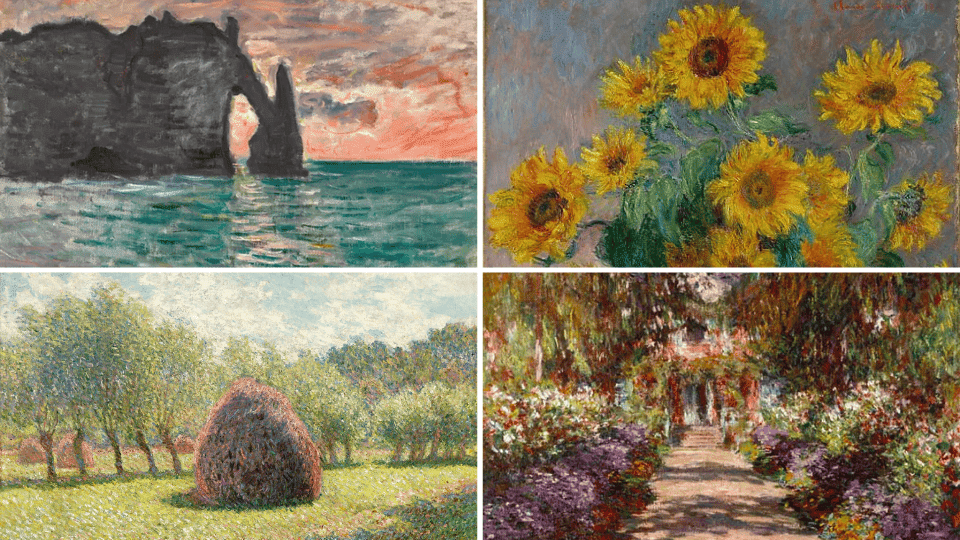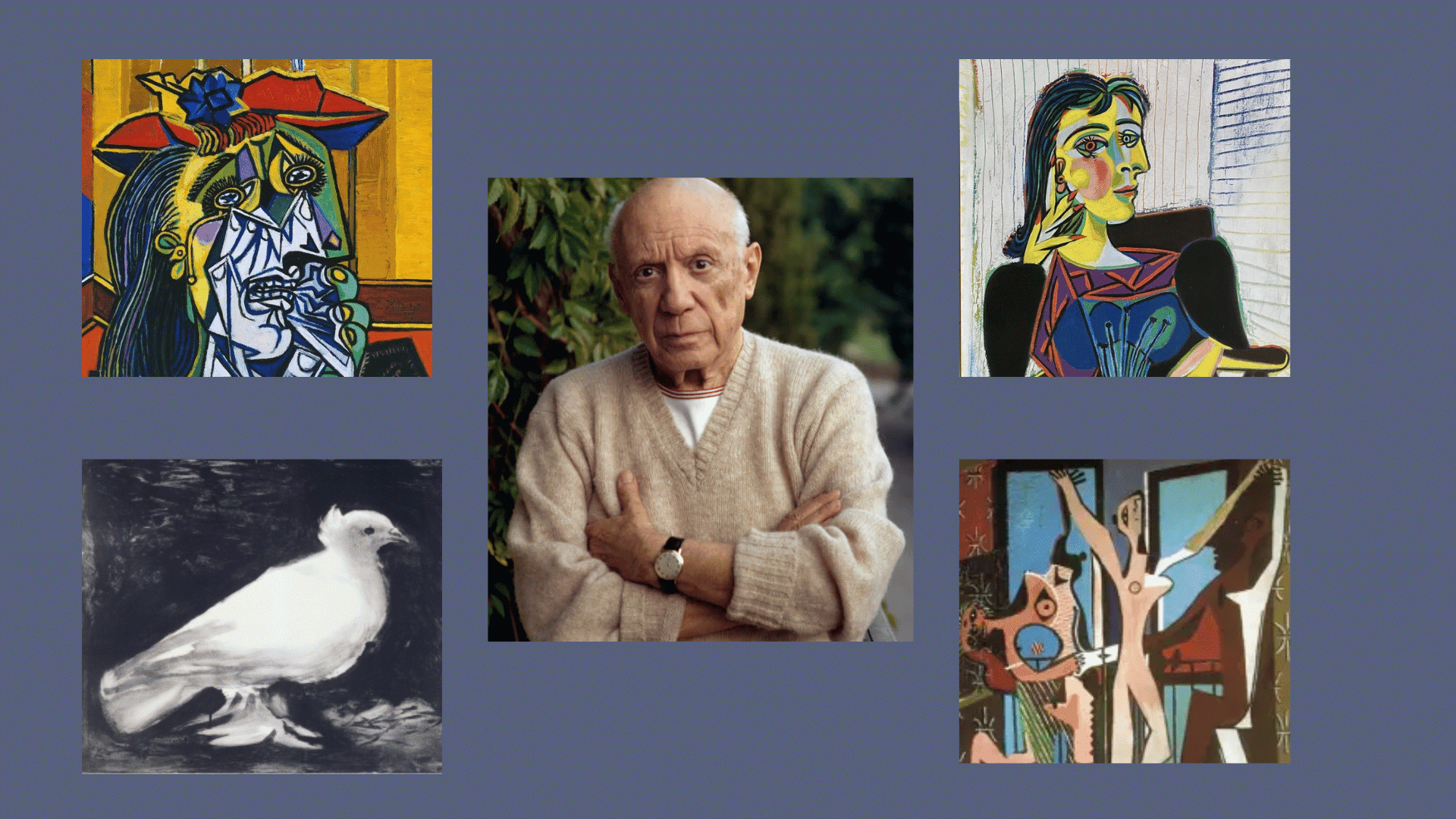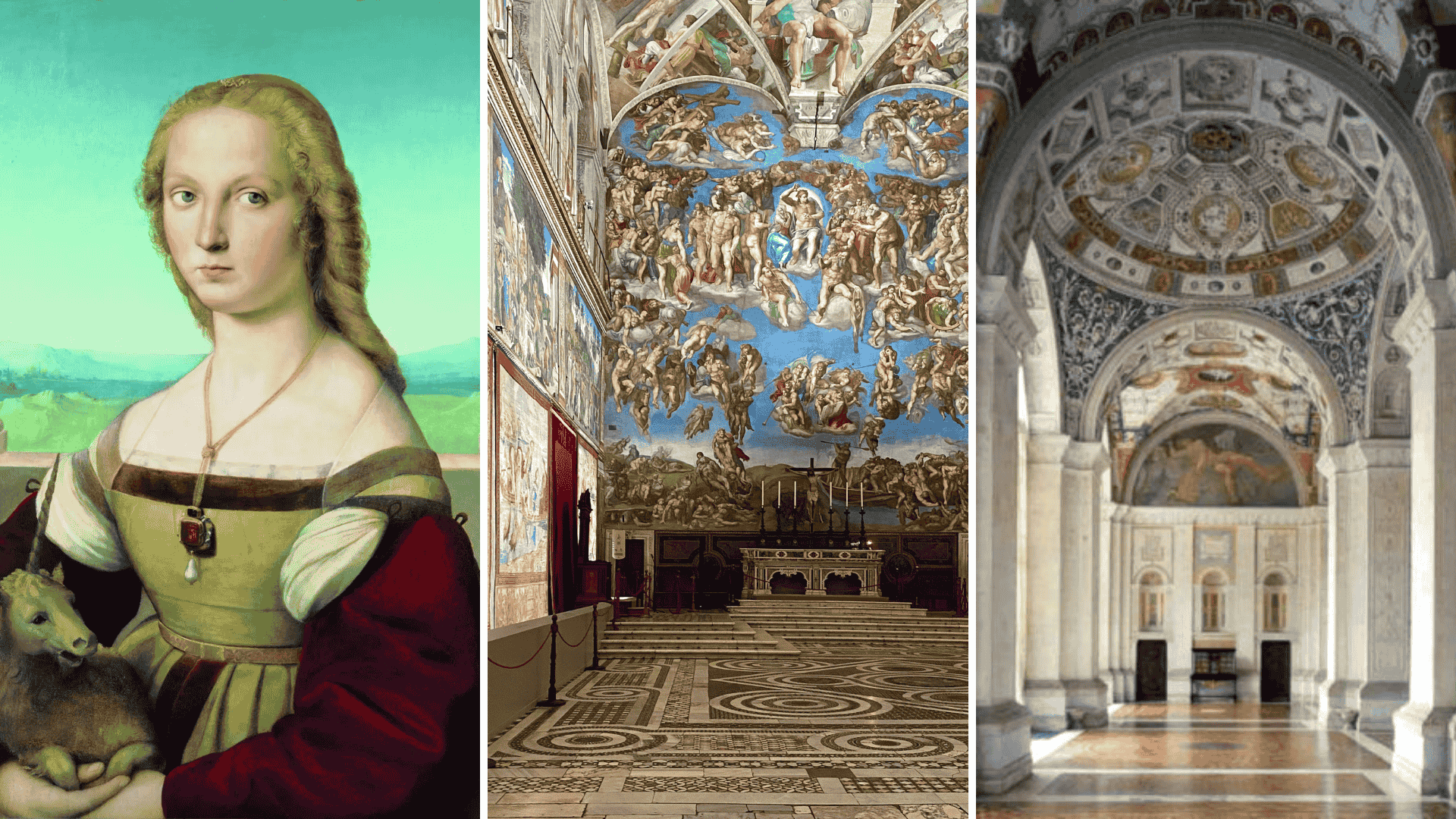Every new artist faces the same puzzle at the art store. Rows of paint tubes line the shelves, but which ones should they choose?
Both mediums offer unique advantages. Acrylics dry fast and clean up with water. Oil paints stay wet longer, giving artists more time to blend colors. But beginners often feel overwhelmed by the technical differences.
This showdown breaks down everything a new artist needs to know. From drying times to cost comparisons, each paint type has its strengths.
The goal isn’t to declare one winner. Instead, it’s about helping beginners find their perfect match and start creating with confidence.
A Quick Overview of Acrylic and Oil Paints
Acrylic paints burst onto the art scene in the 1950s. They’re made from pigments suspended in an acrylic polymer base.
This water-based formula makes them beginner-friendly and easy to clean up. Artists love how fast acrylics dry – usually within 30 minutes to an hour.
Oil paints have a much longer history. Renaissance masters like Leonardo da Vinci used them to create evergreen masterpieces. These paints blend pigments with oil, typically linseed oil.
They remain workable for hours or even days, giving artists ample time to perfect their technique.
Both paints offer lively colors and excellent coverage. Acrylics work well on many surfaces, from canvas to wood. Oil paints traditionally go on canvas or specially prepared boards.
How They Work: Composition, Drying Time & Texture
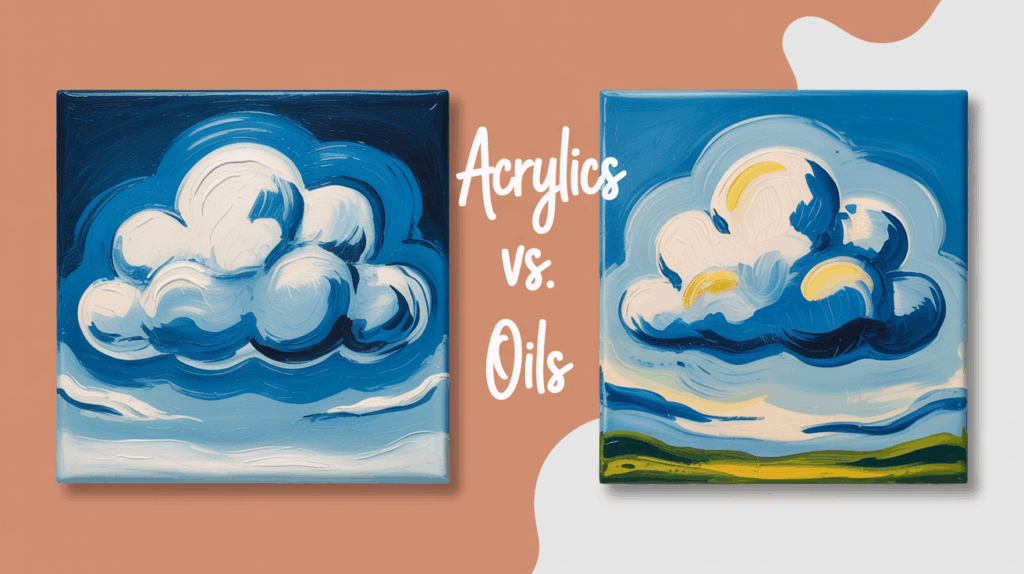
Understanding what goes into each paint type explains why they behave so differently on canvas. The ingredients and chemistry behind acrylics and oils create distinct working experiences that every beginner should know about.
Acrylic Paint Composition
Acrylic paints contain pigments mixed with an acrylic polymer binder. This synthetic resin acts like glue, holding everything together.
Water serves as the carrier, making these paints easy to thin and clean. When the water evaporates, the polymer forms a flexible, waterproof film.
This simple chemistry makes acrylics incredibly versatile for beginners.
Oil Paint Composition
Oil paints blend pigments with drying oils, usually linseed oil. Some manufacturers add walnut or safflower oil for specific effects.
The oil doesn’t evaporate like water does. Instead, it slowly oxidizes and hardens through exposure to air. This chemical process creates the paint’s unique working properties.
Drying Time Differences
Acrylics dry fast – often within 20 to 30 minutes. Humid weather can slow this down slightly. Oil paints take much longer, staying workable for 6 to 8 hours. Some oil colors can take days or even weeks to fully cure.
Texture and Feel
Fresh acrylics feel smooth and flow easily. Once dry, they create a slightly plastic-like surface. Oil paints feel buttery and rich.
They maintain their creamy texture throughout the painting session, allowing seamless blending and smooth gradations.
Practical Considerations of Acrylic vs Oil Paint
This table highlights the primary practical differences between acrylic and oil paints, allowing you to compare them at a glance.
| Factor | Acrylic Paints | Oil Paints |
|---|---|---|
| Setup Time | Quick and simple, just squeeze and paint | Requires palette preparation and medium mixing |
| Cleanup | Water and soap do the job perfectly | Needs turpentine or mineral spirits for cleaning |
| Workspace Requirements | Any room with basic ventilation works fine | A well-ventilated area is essential due to fumes |
| Learning Curve | Beginner-friendly with forgiving mistakes | Steeper learning curve, but more time to correct |
| Surface Flexibility | Works on canvas, wood, paper, fabric, and walls | Best on canvas or specially primed surfaces |
| Storage | Tubes last long when sealed properly | It can dry out if not stored carefully |
| Initial Cost | $15-30 for basic starter set | $25-50 for a quality starter set |
| Ongoing Expenses | Just paint replacement needed | Paint plus solvents and mediums add up |
| Portability | Lightweight and travel-friendly | Heavier with more supplies needed |
Considering these factors makes it easier to select the medium that best suits your style, space, and budget.
Long-Term Perspective: Durability & Artistic Goals
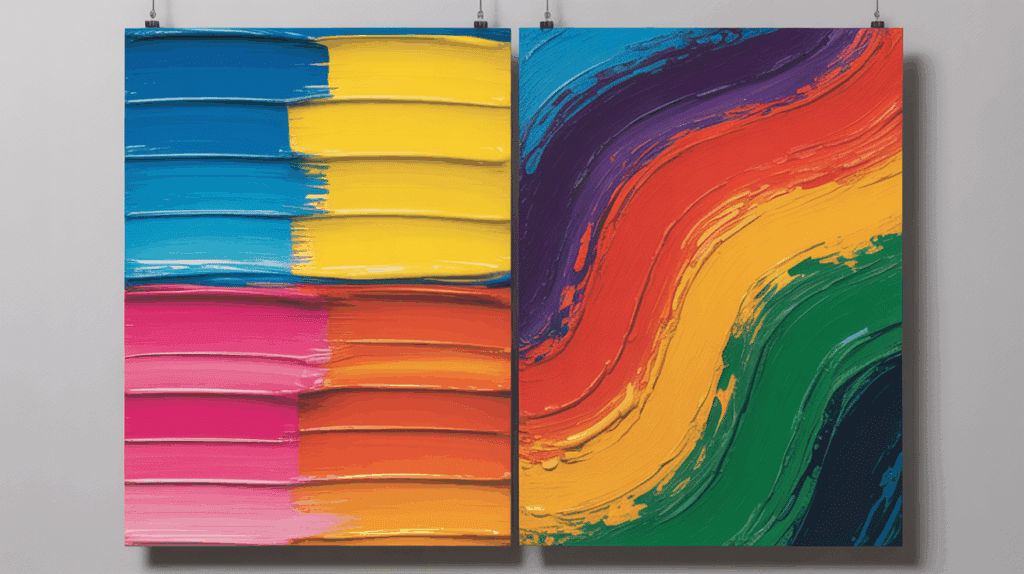
When choosing between acrylic vs oil paint, artists should consider more than just the medium. Both can last for decades, but they age differently.
Understanding these differences helps artists make smarter choices for their artistic path.
Acrylic Paint Durability:
- Maintains color vibrancy for 50+ years when properly stored
- Flexible surface resists cracking and peeling over time
- UV-resistant formulas prevent fading in most lighting conditions
- Quick cure time means paintings are stable within days
- Less prone to yellowing compared to traditional oil paintings
Oil Paint Longevity:
- Proven track record with 400+ year-old masterpieces still intact
- Gradual aging can add depth and character to paintings
- Superior color saturation that deepens beautifully over time
- Self-leveling properties create smooth, professional finishes
- Traditional archival qualities preferred by museums and collectors
The artistic goals matter just as much as durability. Beginners planning quick studies and experimental work often prefer acrylics. Those dreaming of gallery exhibitions might lean toward oils for their prestige factor.
However, both mediums can produce professional results. The key is matching the paint choice to personal working style, available time, and long-term artistic ambitions.
Which Should Beginners Choose? Acrylic vs Oil Paint
Most art instructors recommend acrylics for new painters, and there’s good reason behind this advice.
Students with limited budgets should start with acrylics since they don’t require expensive ventilation systems or specialized cleaning supplies.
However, the “best” choice depends on individual circumstances. Artists who paint sporadically benefit from acrylics’ convenience. But painters who work in long, focused sessions often prefer oils’ extended blending time.
The truth is, both medium teach valuable skills. Many successful artists switch between them based on the project. Beginners shouldn’t stress too much about this decision.
Pick one medium, learn the fundamental techniques, then experiment with the other later. The most important step is simply starting to paint and developing consistent practice habits.
Combining Acrylic and Oil Paint
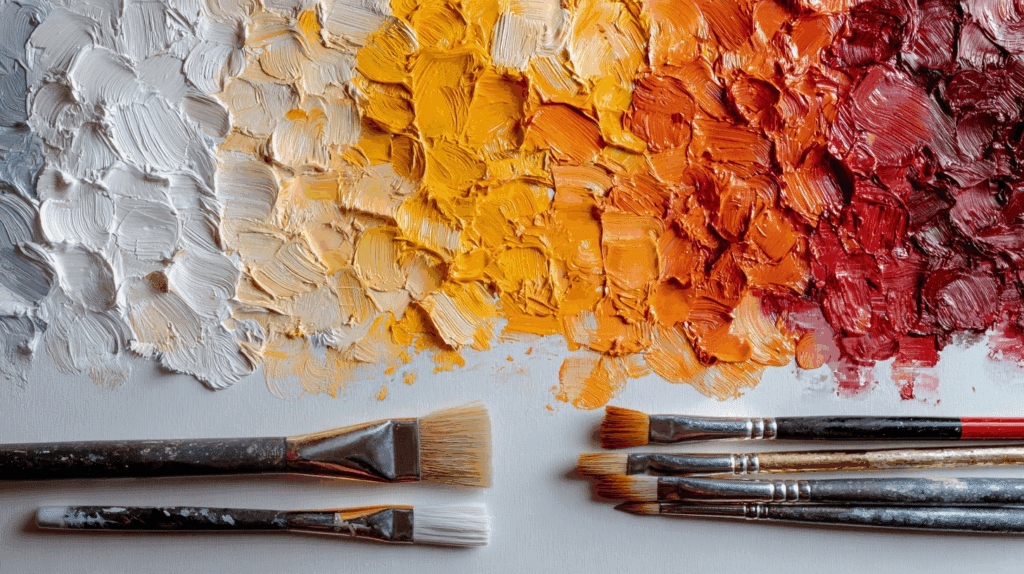
Many beginners wonder if they can mix acrylic and oil paints together or layer them on the same canvas. The short answer is no, these two mediums don’t play well together chemically.
Oil and water-based substances naturally repel each other, creating adhesion problems.
However, artists can use both mediums separately in their practice. Some painters start projects with acrylics for quick underpainting, then switch to oils for final details.
This requires following the “fat over lean” rule, always apply oil paint over completely dry acrylic, never the reverse.
Smart beginners often keep both mediums in their studios for different purposes. Acrylics work great for quick studies. Oils shine for detailed work needing extended blending time.
The key is treating them as separate tools rather than combining them.
The Last Brushstroke
The acrylic vs oil paint debate doesn’t need a definitive winner. Both mediums offer unique advantages that serve different artistic needs and preferences.
New artists shouldn’t feel pressured to make the “perfect” choice from day one.
Many professional artists work with both mediums throughout their careers. They choose based on the specific project, timeline, and desired effect. The real secret to artistic growth lies in consistent practice, not paint selection.
Pick one medium, invest in quality basic supplies, and start creating. Focus on learning fundamental skills like color mixing, brush control, and composition.



